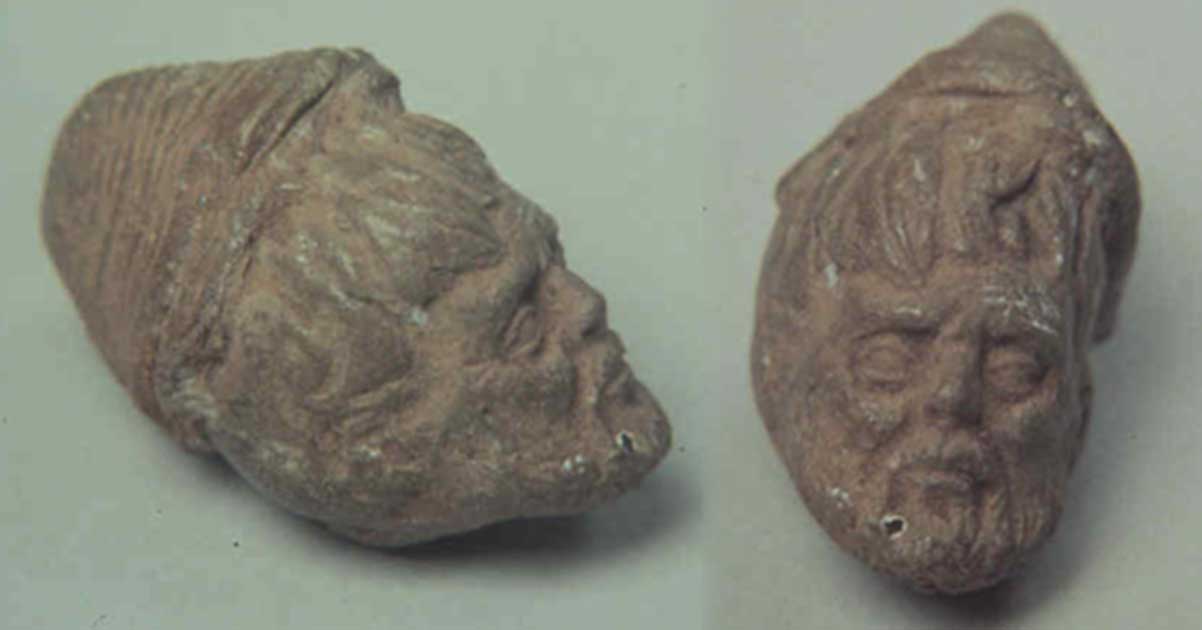Tecaxic-Calixtlahuaca head: Difference between revisions
| Line 2: | Line 2: | ||
The Tecaxic-Calixthahuaca Head is a head figure that is believed to be part of a larger figurine. The head is argued to either be a Viking artifact, or evidence for Pre-Colombian contact, or an out of context post-Colombian grave good, because of it's unique and Roman sculpture look. | The Tecaxic-Calixthahuaca Head is a head figure that is believed to be part of a larger figurine. The head is argued to either be a Viking artifact, or evidence for Pre-Colombian contact, or an out of context post-Colombian grave good, because of it's unique and Roman sculpture look. | ||
[[file:T-CH.jpeg|The Tecaxic-Calixthahuaca head| | [[file:T-CH.jpeg|The Tecaxic-Calixthahuaca head|right]] | ||
===Discovery=== | ===Discovery=== | ||
Revision as of 14:09, 30 November 2017
Artifact
The Tecaxic-Calixthahuaca Head is a head figure that is believed to be part of a larger figurine. The head is argued to either be a Viking artifact, or evidence for Pre-Colombian contact, or an out of context post-Colombian grave good, because of it's unique and Roman sculpture look.

Discovery
A figurine of a head was discovered in the pre-Hispanic town of Tecaxic-Calixtlahuaca in 1933 by Jose Garcia Payon during an excavation of a burial offering that looked very similar to the Roman statues of the same time.
the head] is without any doubt Roman, and the lab analysis has confirmed that it is ancient. The stylistic examination tells us more precisely that it is a Roman work from around the II century A.D., and the hairstyle and the shape of the beard present the typical traits of the Severian emperors period [193-235 A.D.], exactly in the ‘fashion’ of the epoch." (Andreae cited in Domenici 2000: 29).
Context
The figurine was found in a grave along with objects that were gold, copper, turquoise, rock crystal,Jet a stone similar to coal,[2], bone, shells, and pottery. The burial was dated to around 1476-1510 A.D. The presence of the gold in the grave when it was excavated and discovered was fairly good evidence that the grave was in no way altered before discovery.
Controversy
Pre-Colombian Contact
The figurine is often used to argue Pre-Colombian Contact, because the figurine has the appearance of a Roman statue found in Mesoamerica around the same time period. They use this argument, because the terracotta head is considered to be an out of context artifact and the only way it could have gotten to Mesoamerica during that time frame, would be if the Romans, or another civilization, had arrived first.
The Drift Voyage Theory
The idea behind the drift voyage theories is that it is possible that while traveling on the ocean the possibility for a shipwreck is high, and it is possible that artifacts and survivors of the shipwreck could have survived the wreck and drifted ashore. This idea is another that is commonly used to explain the context of the Tecaxic-Calixtlahuaca head.[3]
Viking Souvenir
It is also argued that the figurine is a Viking souvenir. However there is no archaeological evidence for the Medieval Norse having contacts with the North American Indians, let alone Mesoamerican peoples.[1]
Possible Hoax
There are also arguments that the original excavator planted the head to the Mesoamerican site. It is argued that the head was planted due to the thermoluminescence dates that were placed on the head. The head is dated to be between 875 B.C and 1265 A.D.[4], because the terracotta head is dated to significantly older than the site, it is possible that the artifact was imported at a later date and implanted at the site.[4]
References
- ↑ 1.0 1.1 Hristov, Romeo, and Santiago Genoves. “The Roman Head From Tecaxic Calixtlahuaca, Mexico: A Review of the Evidece.” THE ROMAN HEAD FROM TECAXIC-CALIXTLAHUACA, MEXICO: A REVIEW OF THE EVIDENCE, www.unm.edu/~rhristov/calixtlahuaca/Romanhead.htm.
- ↑ “Jet Lignite.” Jet Lignite | Gem5.Com, gem5.com/stone/65/jet-lignite/.
- ↑ Callaghan, Richard. “Drift Voyages across the Mid-Atlantic.” ProQuest, Antiquity Cambridge University Press, June 2015, search-proquest-com.proxy2.cl.msu.edu/docview/1761147641?pq-origsite.
- ↑ 4.0 4.1 Hristov, Romeo H., and Santiago Genovés T. “REPLY TO PETER SCHAAF AND GÜNTHER A. WAGNER'S.” Cambridge Core, Cambridge University Press, 27 July 2001, www.cambridge.org/core/journals/ancient-mesoamerica/article/reply-to-peter-schaaf-and-gunther-a-wagners-comments-on-mesoamerican-evidence-of-pre-columbian-transoceanic-contacts/84EB7394462A25DB683331BB8DE6B39D#.